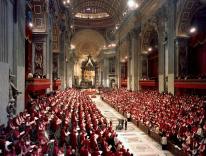With all due respect to the venerable American art museum in Manhattan, its reopening in May will only be the second most significant Whitney museum opening in the United States in recent months.
First place honors go to the Whitney Plantation, the first US museum "dedicated to telling the story of slavery", and powerfully profiled in this terrific New York Times Magazine article by novelist and journalist David Amsden.
Read the article for more on how New Orleans native John Cummings came to buy the 262-year old plantation, the quirk of industrial history that led to Cummings knowing "more about my plantation than anyone else around here — maybe more than any plantation in America outside of Monticello", the planned memorial to the 1811 German Coast Uprising (America's largest slave revolt), the critical role played by Senegalese historian Ibrahima Seck in creating the museum, and what happened when black and white branches of the Haydel family reunited at their old family homestead. I want to slip off to the side with some thoughts about what this means for white folks today.
Before the Civil War, New Orleans was where Black slave and Irish day laborers loaded cotton bales from all across the Mississippi delta into the holds of cotton ships (the supertankers of their day) for shipment to the textile mills of Old and New England. According to a college professor of mine---whose task it was to get our young minds to grapple with the realities of 19th century US history---the Irish worked down in the hold while the enslaved Africans worked up above on the decks.
Why? Simple economics, really.
If the 500 pound bales of cotton slipped, fell into the hold and crushed a worker, a dead slave would mean the loss of an investment of $1-2,000 (back in the days when that was a lot of money). A dead Irishman just meant that he didn't get paid for that day's work. (Point being---or one of them anyway---just because 19th century Southern slaveowners were wrong about the morality of slavery doesn't mean they were wrong when they decried the immorality of "wage slavery".)
If, as Amsden reports, Cummings, "embodies the scrappiness of the Irish Catholics who flooded New Orleans in the 19th century", then it's also true that Cummings' story offers a way forward for 21st century European-Americans confronted with the enduring legacy of slavery.
“I started to see slavery and the hangover from slavery everywhere I looked,” he said. As a descendant of Irish laborers, he has no direct ties to slaveholders; still, in a departure from the views held by many Southern whites, Cummings considered the issue a personal one. “If ‘guilt’ is the best word to use, then yes, I feel guilt,” he said. “I mean, you start understanding that the wealth of this part of the world — wealth that has benefited me — was created by some half a million black people who just passed us by. How is it that we don’t acknowledge this?”
Cummings' fellow Louisianan (and fellow Catholic), US House Majority Whip Steve Scalise, offers a contrasting position. When in the Louisiana legislature some years ago, Scalise voted against a resolution apologizing for slavery saying, “Why are you asking me to apologize for something I didn’t do and had no part of?”
Scalise's statement is so reflexively defensive as to approach absurdity. First, he wasn't being singled out as an individual; he was voting as a duly elected official of the state of Louisiana. There are lots of debatable points about slavery in Louisiana, but arguing that it's something the state "didn't do and had no part of" isn't one of them.
It's great that the United States has a Holocaust memorial museum on the Mall in Washington, DC. But, as Prof. Eric Foner observes, “If the Germans built a museum dedicated to American slavery before one about their own Holocaust, you’d think they were trying to hide something. As Americans, we haven’t yet figured out how to come to terms with slavery. To some, it’s ancient history. To others, it’s history that isn’t quite history.”
Maybe someday the United States will have a grand museum in Washington or New York or Chicago or another of its great cities dedicated to telling the story of American slavery. Until then, museum lovers can travel the 1,348 miles southwest from the Whitney in New York City to the Whitney in the unincorporated township of Wallace, LA. As John Cummings says, "“It is disturbing. But you know what else? It happened. It happened right here....”.

